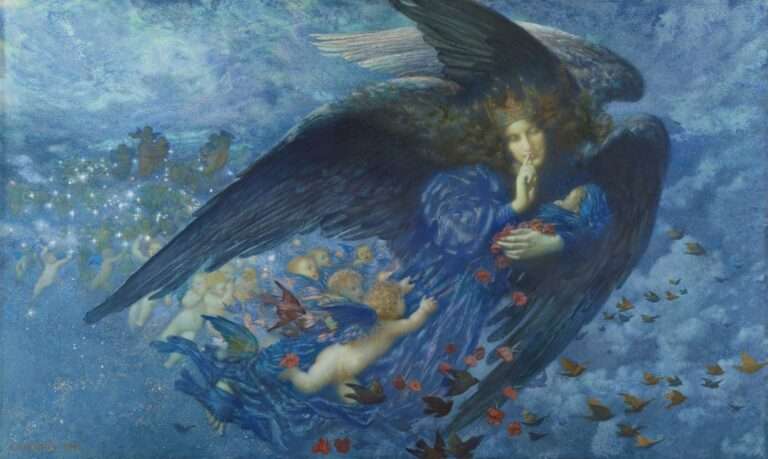The Timeless Allure of Art Deco Symbolism

Art Deco symbolism is a style that emerged in the early 20th century and became popular in the 1920s and 1930s. It is characterized by bold geometric shapes, vibrant colors, and a sense of opulence and luxury. Art Deco symbolism was influenced by a variety of factors, including the technological advancements of the time, the fascination with nature, and the desire to express individuality. This article will explore the origins, key characteristics, and enduring legacy of Art Deco symbolism in art and design.
The Origins of Art Deco Symbolism: A Brief History
Art Deco symbolism emerged in the aftermath of World War I, during a period of rapid social and cultural change. The style was influenced by a variety of factors, including the rise of industrialization, the discovery of ancient civilizations such as Egypt and Mesopotamia, and the desire to break away from traditional artistic styles.
One of the key influences on Art Deco symbolism was the Exposition Internationale des Arts Décoratifs et Industriels Modernes, held in Paris in 1925. This exhibition showcased the latest trends in art and design, and it was here that the term “Art Deco” was coined. The exhibition featured a wide range of works that embodied the boldness and elegance that would come to define Art Deco symbolism.
The Key Characteristics of Art Deco Symbolism: Boldness and Elegance
Art Deco symbolism is characterized by its boldness and elegance. The style often features strong geometric shapes, such as triangles, circles, and squares, which are used to create a sense of order and balance. These shapes are often combined with sleek lines and curves to create dynamic compositions.
In addition to its use of geometric shapes, Art Deco symbolism is known for its vibrant colors. Bright hues such as red, yellow, and blue are often used to create a sense of energy and vitality. These bold colors are often paired with metallic accents, such as gold or silver, to create a sense of opulence and luxury.
The Role of Geometry in Art Deco Symbolism: Precision and Symmetry
Geometry plays a central role in Art Deco symbolism. The use of geometric shapes and patterns is a key characteristic of the style, and it is used to create a sense of precision and symmetry. These geometric shapes are often repeated throughout a design, creating a sense of rhythm and harmony.
One of the most iconic geometric motifs in Art Deco symbolism is the chevron pattern. This pattern consists of repeated V-shaped lines, which can be seen in everything from architecture to fashion. The chevron pattern is often used to create a sense of movement and dynamism, as well as to add visual interest to a design.
The Fascination with Nature in Art Deco Symbolism: Flora and Fauna
Art Deco symbolism also incorporates elements from the natural world. The style often features motifs inspired by flora and fauna, such as flowers, birds, and animals. These natural motifs are often stylized and simplified, creating a sense of elegance and sophistication.
One of the most common natural motifs in Art Deco symbolism is the lotus flower. The lotus flower is often depicted in a stylized form, with its petals arranged in a symmetrical pattern. This motif is often used to symbolize purity and enlightenment, and it can be seen in everything from jewelry to architecture.
The Influence of Technology in Art Deco Symbolism: Futuristic Elements

Art Deco symbolism was also influenced by the technological advancements of the time. The style incorporates futuristic elements, such as streamlined forms and sleek materials, which reflect the optimism and excitement surrounding new technologies.
One of the key ways that technology influenced Art Deco symbolism was through the use of new materials. The style often features materials such as chrome, glass, and plastic, which were considered modern and cutting-edge at the time. These materials were used to create sleek and streamlined designs that reflected the speed and efficiency of the machine age.
The Significance of Color in Art Deco Symbolism: Bold and Vibrant Hues
Color plays a crucial role in Art Deco symbolism. The style is known for its use of bold and vibrant hues, which are used to create a sense of energy and vitality. Bright colors such as red, yellow, and blue are often used to create a striking contrast against neutral backgrounds.
In addition to its use of bold colors, Art Deco symbolism also incorporates metallic accents. Gold, silver, and bronze are often used to add a sense of opulence and luxury to a design. These metallic accents can be seen in everything from jewelry to furniture, and they contribute to the overall aesthetic of Art Deco symbolism.
The Representation of Power and Wealth in Art Deco Symbolism: Opulence and Luxury
Art Deco symbolism is often associated with power and wealth. The style reflects the opulence and luxury of the time, and it incorporates these themes into its designs. Art Deco symbolism often features materials such as gold, silver, and marble, which were considered symbols of wealth and status.
One of the key ways that Art Deco symbolism represents power and wealth is through its use of architectural motifs. The style often features grand buildings with elaborate facades, which are designed to impress and awe. These buildings often feature intricate details such as decorative friezes, ornate carvings, and grand entrances.
The Expression of Individuality in Art Deco Symbolism: Personalized Designs
Art Deco symbolism allows for individual expression and personalization in designs. The style embraces the idea that art should be accessible to everyone, and it encourages individuals to express their own unique style and taste.
One of the ways that Art Deco symbolism allows for individual expression is through its use of decorative motifs. The style often features motifs such as sunbursts, zigzags, and geometric patterns, which can be combined in endless variations to create personalized designs. These motifs can be seen in everything from textiles to furniture, and they allow individuals to create their own unique aesthetic.
The Cross-Cultural Influences in Art Deco Symbolism: Global Inspiration
Art Deco symbolism incorporates influences from various cultures and regions around the world. The style was influenced by the discovery of ancient civilizations such as Egypt and Mesopotamia, as well as by the cultural exchange that occurred during the colonial era.
One of the key ways that Art Deco symbolism incorporates cross-cultural influences is through its use of motifs and patterns. The style often features motifs inspired by African, Asian, and Native American art, which are combined with European design elements to create a unique aesthetic. These cross-cultural influences can be seen in everything from jewelry to textiles, and they contribute to the overall richness and diversity of Art Deco symbolism.
The Enduring Legacy of Art Deco Symbolism: A Timeless Aesthetic
Art Deco symbolism continues to influence art and design today and remains a timeless aesthetic. The style’s boldness and elegance, its use of geometric shapes and patterns, its fascination with nature, its incorporation of technology, its bold colors, its representation of power and wealth, its expression of individuality, and its cross-cultural influences all contribute to its enduring appeal.
Art Deco symbolism has had a lasting impact on various fields, including architecture, interior design, fashion, jewelry design, and graphic design. Its influence can be seen in iconic buildings such as the Chrysler Building in New York City and the Palais de Tokyo in Paris. It has also inspired countless designers and artists, who continue to draw inspiration from its distinctive style and aesthetic.
Art Deco symbolism is a style that emerged in the early 20th century and became popular in the 1920s and 1930s. It is characterized by its boldness and elegance, its use of geometric shapes and patterns, its fascination with nature, its incorporation of technology, its bold colors, its representation of power and wealth, its expression of individuality, and its cross-cultural influences. Art Deco symbolism continues to influence art and design today and remains a timeless aesthetic. Its enduring legacy can be seen in iconic buildings, as well as in the work of countless designers and artists who continue to draw inspiration from its distinctive style.
If you’re interested in exploring the symbolism behind Art Deco, you might also find the article on the symbolism of the star fascinating. The star has been a powerful symbol throughout history, representing guidance, inspiration, and aspiration. In Art Deco design, stars were often used to convey a sense of glamour and sophistication. To learn more about the symbolism of the star, check out this article on Symbolism Hub.
FAQs
What is Art Deco Symbolism?
Art Deco Symbolism is a design style that emerged in the 1920s and 1930s. It is characterized by its use of geometric shapes, bold colors, and stylized forms. The style was popular in architecture, interior design, fashion, and art.
What are the key features of Art Deco Symbolism?
The key features of Art Deco Symbolism include geometric shapes, bold colors, stylized forms, and the use of materials such as chrome, glass, and marble. The style often incorporates motifs from ancient cultures, such as Egyptian and Aztec designs.
What is the history of Art Deco Symbolism?
Art Deco Symbolism emerged in the 1920s and 1930s as a response to the ornate and elaborate styles of the previous era. It was influenced by the modernist movement and the desire to create a new, streamlined aesthetic. The style was popular in Europe and the United States, and was used in a variety of design fields.
What are some examples of Art Deco Symbolism?
Examples of Art Deco Symbolism can be found in architecture, such as the Empire State Building in New York City and the Hoover Building in London. The style was also popular in interior design, with furniture and decorative objects featuring geometric shapes and bold colors. Art Deco Symbolism was also used in fashion, with designers such as Coco Chanel incorporating the style into their designs.
What is the significance of Art Deco Symbolism?
Art Deco Symbolism is significant because it represents a break from the ornate and elaborate styles of the previous era. It was a response to the modernist movement and the desire to create a new, streamlined aesthetic. The style was popular in a variety of design fields and continues to influence design today.





